From fun to fungus: Detroiters get creative with alternative food
The Detroit food economy is growing, in both scale and variety. Sarah Rose Sharp writes about three individuals and businesses involved in food foraging, mushroom harvesting, and bug breeding.

Detroit has been in the news a lot lately for its innovative approaches to urban farming and local sourcing. But there are other individuals, who’ve received less attention, picking a new path toward food sovereignty and sustainable nutrition. Seen through their eyes, Detroit alive with possibilities in even more ways than many even knew.
“I’ve always been an off-the-grid type of person, trying to figure out how to live life a little less dependent on systems,” says Rushdan. “The blackout in 2003 was a big wake-up call for me. I thought I was off the grid, but really, I was dependent on these systems for my very survival. So I was like, let me figure out what I can eat.”
Our walk was about discovering wild edibles, like dandelions, burdock, and broadleaf plantain—plants that most people would take for little more than weeds, but others know for their nutritional and medicinal properties.
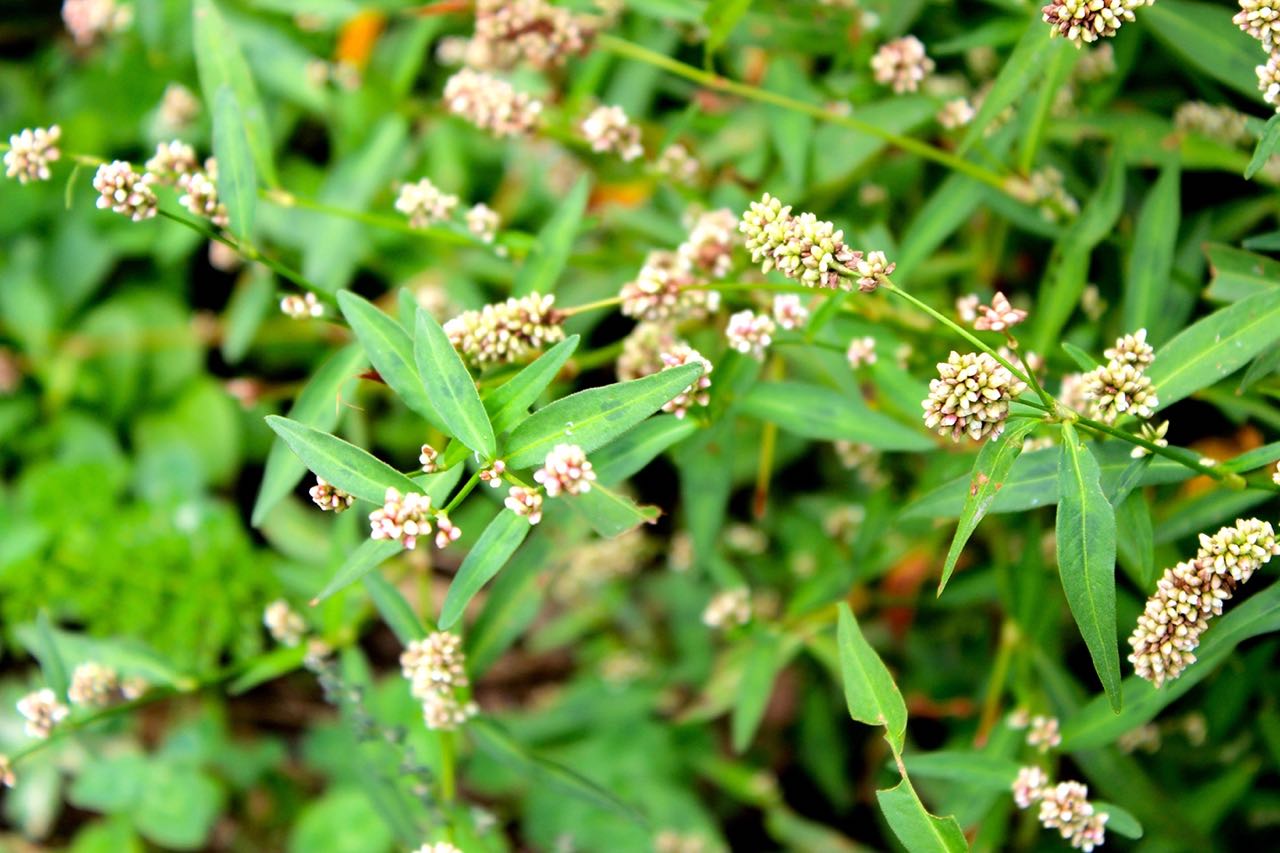
“I always preface any conversation with: if you aren’t absolutely sure, don’t eat it,” says Rushdan, “because there are some poisonous things out there.” Flowering hemlock, for example, is a well-known poison that looks similar to Queen Anne’s lace.
Rushdan used to teach a workshop through the Greening of Detroit at the Detroit Market Garden in Eastern Market to help novice foragers learn the ropes. For now though, these workshops aren’t her permanent gig. “It’s a hobby, but I definitely see where people could profit from classes,” she says. “I think there’s a strong interest in that.”
Just a few miles away, a couple of Detroit transplants are working to grow their hobby into a full-fledged business—Chris Carrier and Deana Wojcik of the Detroit Mushroom Factory came to Detroit three years ago for the fun, and stayed for the fungus.
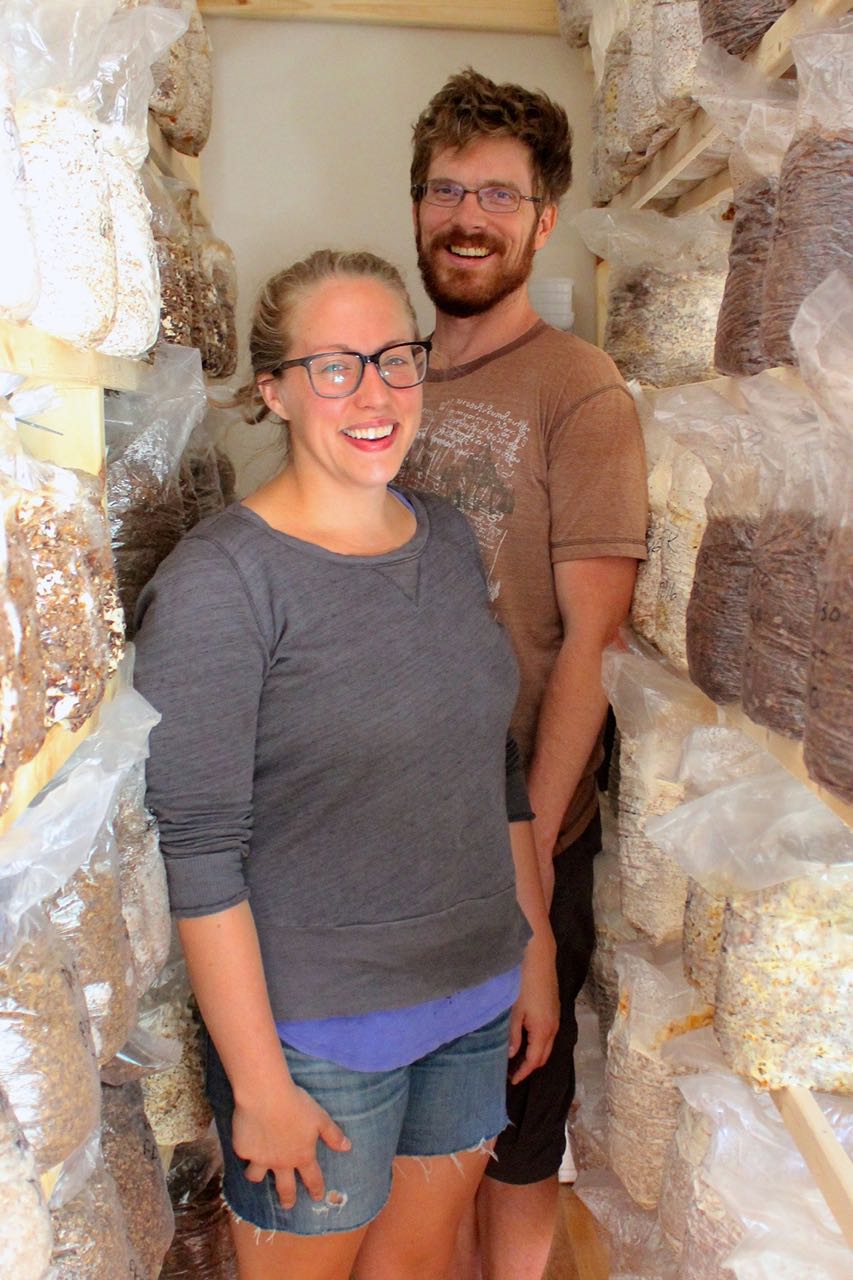
“I was, and am, a software engineer, just living in the [San Francisco] Bay Area working a normal kind of job, and started doing mushrooms as a hobby,” says Carrier. He enjoyed it so much, he learned how to grow his own mushrooms without a kit.
“The next thing I know, the whole house was covered in them.”
Carrier and Wojcik’s house in Detroit is no different. Several bedrooms and the basement of their North End home are dedicated to mushroom farming. They’re working out the kinks and building a sustainable business model while providing locally grown edible mushrooms to some of Detroit’s popular eateries.
Mushrooms can be a temperamental crop, requiring extreme precision in certain parts of their lifecycle, and far less in others. It’s crucial to provide a sterile environment for the initial inoculation, which plants the starter tissue in a matrix of sawdust or spent beer grain. If any mold spores are present during this process, they’ll get into a turf war with the mushrooms for control of the plastic bags into which they are planted.
Aside from the lab, where these sterile operations are run, an entire bedroom of Carrier and Wojcik’s home is dedicated to an astonishing mushroom nursery, where shelf after shelf of cube-like bags, each labeled with their inoculation date, sit and cultivate mycelium—the underground structure of mushrooms which supports and far outweighs the fruiting bodies that are the recognizable and edible part of the fungus. Once a mycelium block is adequately developed, it moves down to a cool and humid basement-grow area to develop the oyster, “cinnamon cap” (or chestnut), and shitake varietals that are the Detroit Mushroom Factory’s stock and trade.
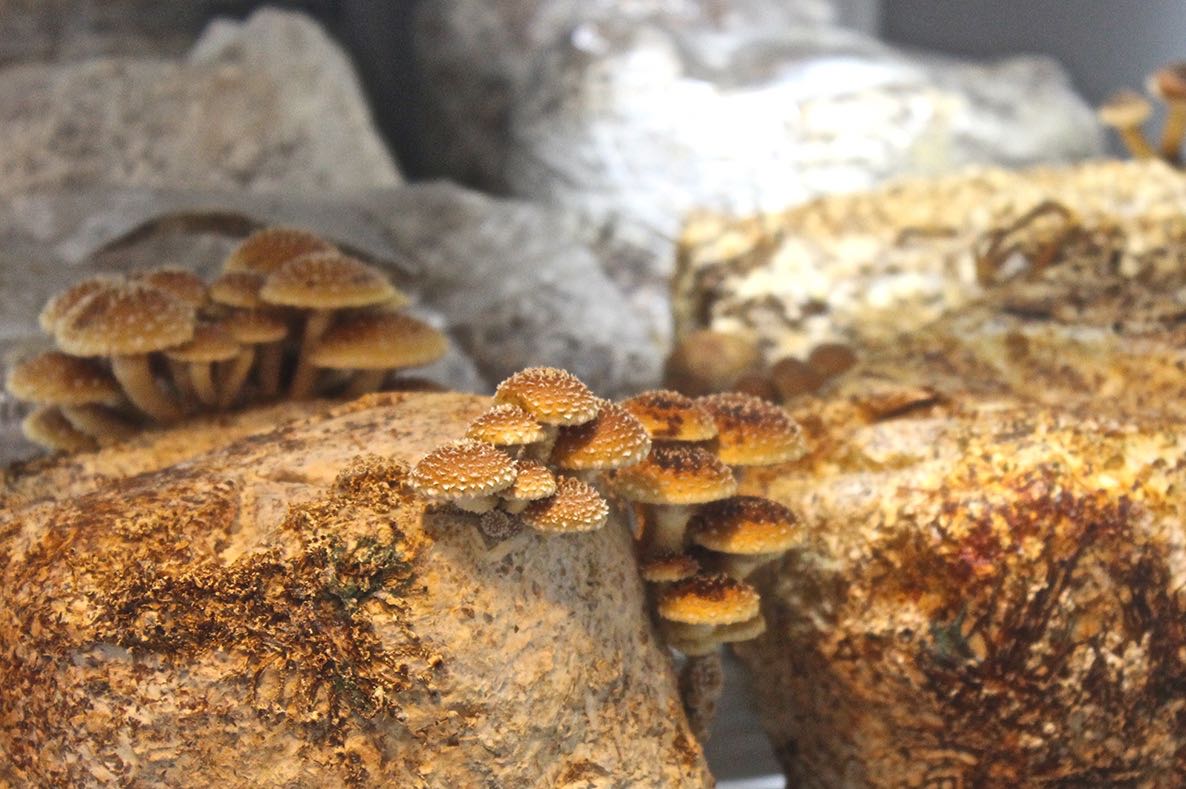
Mushrooms have a broad base of culinary aficionados with great nutritional properties. “They’re high in protein, low in fat,” Carrier says. “They’re good for you, and some of them have B-vitamins that you can’t find in most vegetables, so they’re a component of a good diet.”
A jaunt back toward Wayne State University finds another growing business testing its wings … and thoraxes, and antennas. Detroit Ento hopes to put Detroit on the map as a leader in the development of sustainable insect-based proteins.
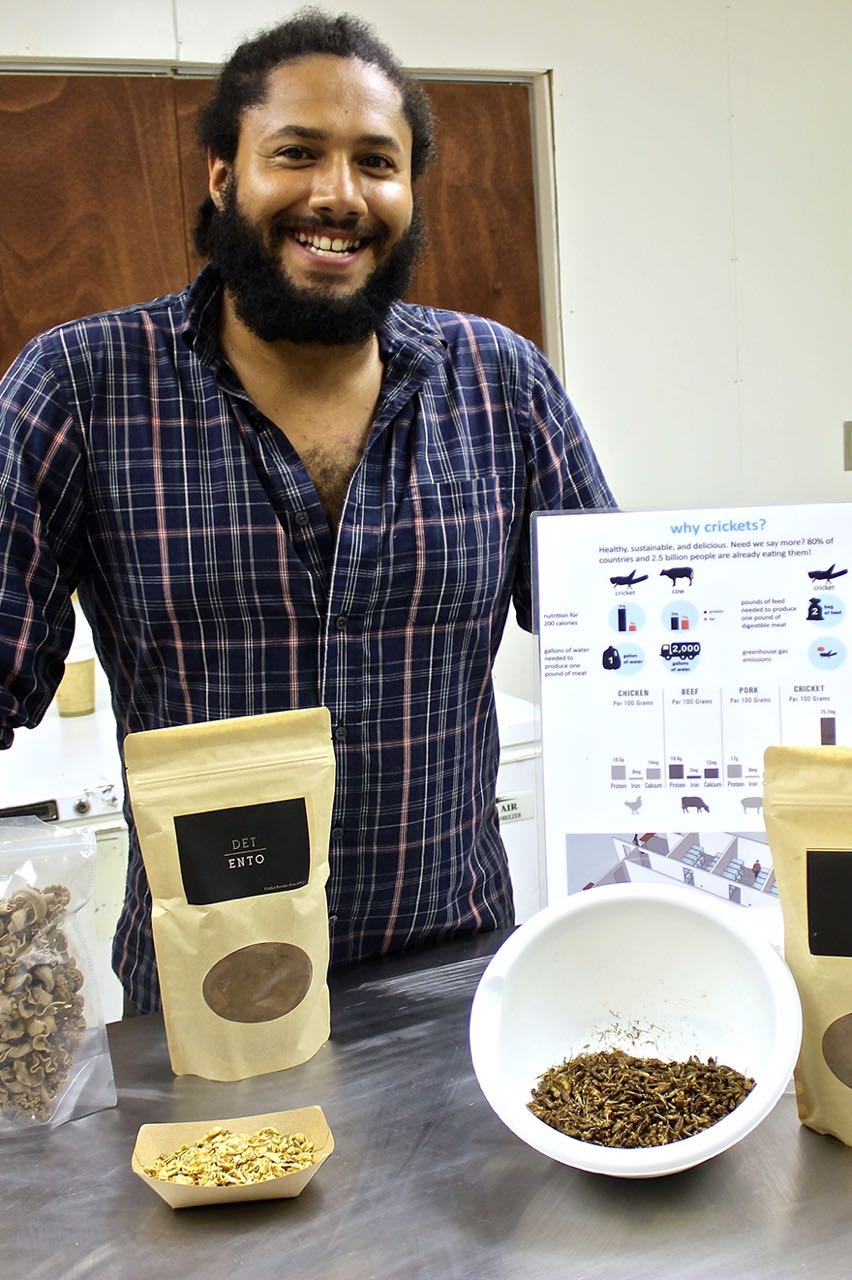
“There’s only about seven or so cricket farms in North America and three processors,” says Anthony Hatinger, who launched Detroit Ento in July of 2015 with partners Theodore Kozerski and Farrin Forsberg.
The company kitchen space is situated near New Center and is on the brink of getting the official licensing they need to go full steam ahead with production in this new and largely unregulated field. In the meantime, they’re focusing on processing their harvest and converting mature crickets into a kind of rich, sandy powder that can add a powerful punch of protein to a smoothie or be incorporated into after-market products like pasta, granola, and energy bars.
“Most of the rest of the world consumes insects. And not just out of sustenance, but because it’s considered a delicacy,” says Hatinger. “Every place has its own regional favorites.”
Though the five-course Detroit Ento dinner party hosted by Salt & Cedar earlier this year was a unique culinary experience, in the future, broad incorporation of insect proteins may be inevitable.
“70 percent of our arable land and water is already tied up in agricultural use,” Hatinger explains. “And as we add another 2 billion people to the population in the next 30 years, we’re not just going to be able to ramp up livestock production. We know there’s going to be some conversion factors in how the future of protein looks.”
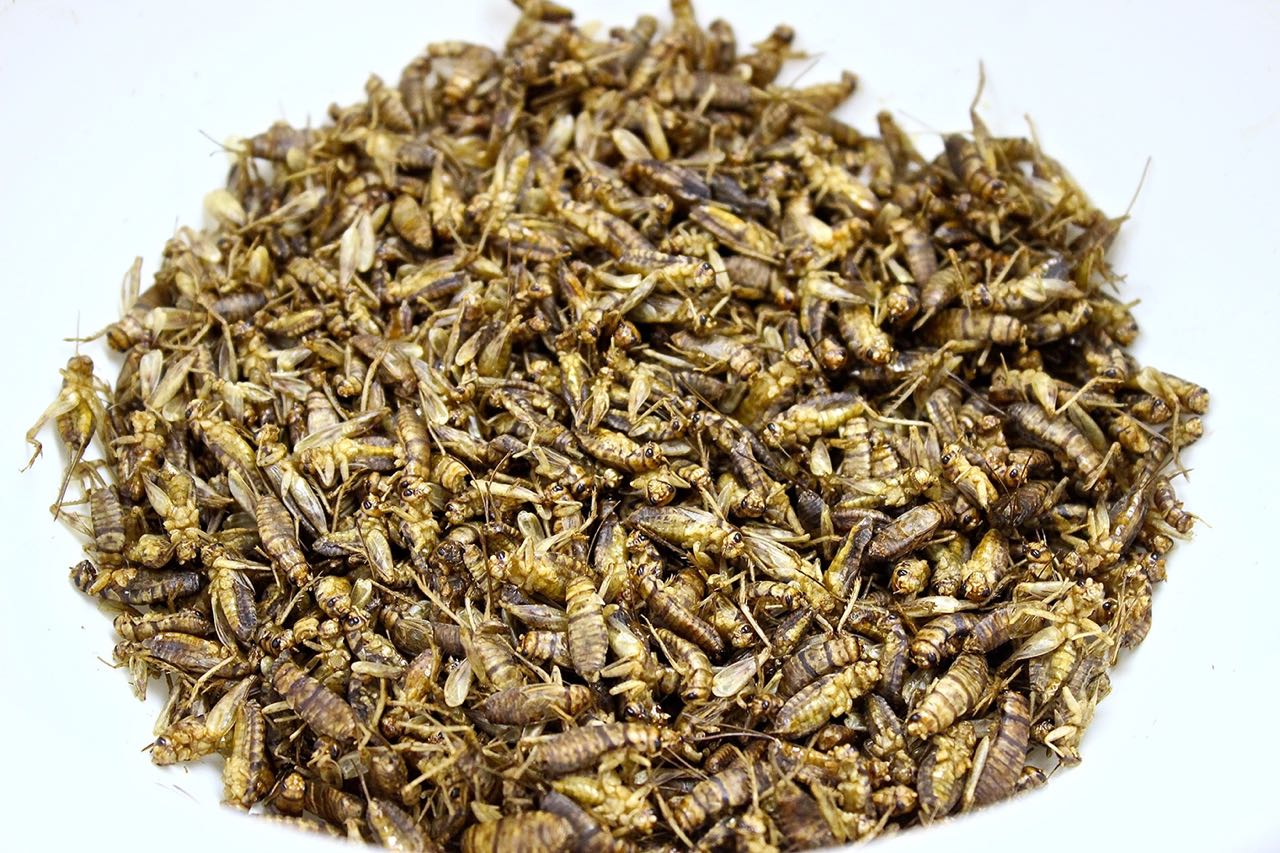
Cricket protein can be produced using a fraction of the space, feed, and water of livestock such as cows. For example, crickets only require one gallon of water to produce one pound of meat, versus a whopping 2,000 gallons of water for every pound of beef. Crickets also contain a markedly higher protein-to-fat ratio versus beef.
Insect-based protein offers a vision of more sustainable agricultural practices, and even potential waste mitigation. A recent Stanford study showed that mealworms produce enzymes that can break down Styrofoam.
Leaving Ento’s headquarters, the world seems full of promise. I hear crickets chirping, spot a fairy ring of mushrooms lurking in the shade at the foot of a tree, and I can confidently pick out at least two wild edibles growing in a nearby vacant lot.
I recall the truth in Rushdan’s words about not only the practicality, but the joy, of wild edibles: “It changed my perspective,” she said. “An empty lot once seemed like a nuisance. But if you’re looking at it for all the things that it holds, it becomes of value. I like to see the value in things that people sometimes dismiss.”






